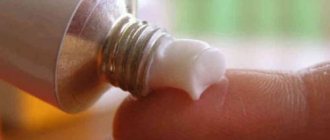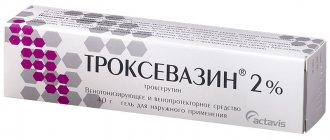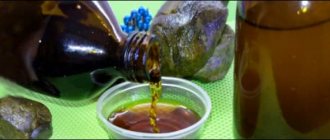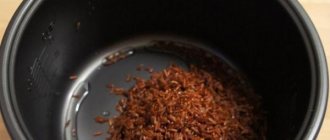Treatment with propolis
This brown substance with a pleasant odor and bitter taste is bee glue. Propolis has a unique composition. This is what explains its healing effect on the body. This beekeeping product consists of wax, resins and pollen. It contains many vitamins, minerals, amino acids, flavonoids, and essential oils. In addition, there are unique natural antibiotics. They are stronger in action than the existing ones. Treatment with propolis has long been used in medicine.
This can be explained by the fact that it has a strong effect on the human body:
- Destroys any pathogenic microflora, leaving beneficial microorganisms intact.
- Helps blood phagocytes remove toxins and other foreign material.
- Quickly relieves inflammation.
- Strengthens immunity.
- Has a strong analgesic effect.
- Strengthens the walls of capillaries.
- Stimulates the regenerative properties of tissues.
The healing properties of propolis
Today, the origin and exact composition of bee glue is unknown; many biologists believe that it is generally unstable, the content of substances varies depending on the circumstances.
Most experts are of the opinion that oza is a complex substance consisting of flower pollen, essential oils, plaque from tree buds, and other plant elements fermented by bees.
Be that as it may, the beneficial qualities of the product are recognized even by official medicine, which is often skeptical of such remedies. Propolis ointment has the following medicinal properties:
- antimicrobial and antiviral;
- normalizes the functioning of the heart and blood vessels;
- natural analgesic;
- normalizes blood pressure;
- antifungal;
- accelerates healing and restoration of the skin;
- normalizes the functioning of the central nervous system;
- removes free radicals, toxins and waste.
Types of propolis ointment
This product can be found in any pharmacy. But there are several types of ointments, so many people do not know which one to buy.
The peculiarities of their action depend on how much bee glue, the main component, is in them. Propolis ointment in pharmacies comes in several varieties:
- 30% is the strongest drug. This ointment is used for serious lesions of the skin.
- 20% has antifungal and antibacterial effects.
- 15% ointment is used to heal wounds, cuts, contusions and bruises. It is effective against acne and erosions.
- 10% ointment is also called cream, because the concentration of propolis allows it to be used as a skin care product.
- You can also find 2 and 3% products. For example, the drug "Apit". This propolis ointment is less effective. But it is successfully used to treat many skin problems. It is especially effective in combating fungal diseases, demodicosis and scabies.
- There is also honey-propolis ointment. In it, honey enhances the effect of bee glue. This product works well on the skin and fights many problems.
- Propolis-gum ointment has a wide range of applications. Can be used to treat various skin lesions. Used for hemorrhoids and acne, to prevent diaper rash in infants.
- Propolis-wax ointment moisturizes the skin, stimulates regeneration processes and prevents the formation of scars.
This product is produced by many pharmaceutical companies. Propolis is also included in the following drugs: “Apiphlogin”, “Apibalzam”, “Apilon”, “Vitus-factor”, “Propoceium”, “Rino-factor”, “Tentorium”, “Chilidonia” and others. But they usually cost more than original ointments, since they also contain other components.
Application of propolis-based balm
At home, you can make your own balm based on propolis, which is an effective remedy for the treatment and prevention of viral diseases . The balm contains propolis, linden, peppermint, sweet clover, thyme, prunes, and 0.5 liters of vodka.
To prepare it, the crushed components should be placed in a glass container and filled with vodka. Place the composition in a dark place for two months. Then strain the mixture, place it in a container, add 10 grams of propolis and leave for another 30 days.
What does this ointment contain?
The main component of this drug is propolis, also known as bee glue. Therefore, the effect of the ointment is based on the substances included in its composition. It is made on the basis of petroleum jelly or lanolin, so it always has a thick, oily consistency. Propolis dissolves only at temperatures above 36 degrees. But the uniqueness of this substance is that when heated, even for an hour, it retains all its properties. Sometimes such an ointment is made based on fish oil or healthy vegetable oil, most often flaxseed or olive oil. Salicylic acid can be added to the finished product. The ointment is very effective in fighting acne. It is used to care for problem skin.
Making ointment
Even any schoolchild can prepare propolis ointment at home. All we need is propolis itself, fat for the base of the ointment, a freezer, a gas (electric) oven and a container for cooking (enamel or any other pan, deep bowl, etc.) and a container for storing the ointment. You can use any fat for the base: animal fat (goose, badger, pork) or mineral fat (vaseline), regular butter will also work. So, the ingredients are at hand, we can start cooking:
- freeze propolis in the freezer;
- grate it. If suddenly you don’t have a grater, you can simply crush the frozen propolis - it’s not difficult;
- fill with water. This is necessary to separate unnecessary impurities from propolis. Everything that comes up goes to waste, the rest is pure propolis. You can safely skip this point if propolis is purchased at a pharmacy in powder form. In this case, it has already gone through all the cleaning procedures;
- we take fat based on the proportion of 1 part propolis to 9 parts fat - for 10% ointment, 2 parts propolis to 8 parts fat - for 20% ointment and, accordingly, 3 parts propolis to 7 parts base for preparing a 30% ointment;
- heat the fat to 80 degrees;
- add propolis to the heated fat;
- heat for 30-40 minutes, stirring continuously;
- filter the resulting mixture;
- pour into pre-prepared containers.
Store the prepared ointment in the refrigerator. The shelf life is not strictly regulated. If the base was butter, it is significantly reduced (about a month). An ointment based on animal and vegetable fats can be stored for several years while maintaining all its beneficial properties. As you can see, propolis ointment has a simple recipe. And the use of propolis ointment is also a simple science. In this case, you should use common sense and seek the advice of a doctor if you experience any unwanted side effects.
How to make it yourself?
If such an ointment is difficult to find in a pharmacy, you can make it yourself. To do this, you just need to purchase propolis from beekeepers. Any fat is taken as a basis: lanolin, butter or vegetable oil, petroleum jelly, etc. Propolis itself ensures long-term storage of the ointment. You can prepare it in any way. The main thing is to warm the product in a water bath for at least 5-10 minutes. The temperature should not rise above 80 degrees. In this case, all components will dissolve and mix well.
The proportions for making the ointment depend on the purpose for which it will be used. For 100 grams of fat you need to take 10, 20 or 30 grams of propolis. The fatty base - most often lanolin or petroleum jelly - is first heated, then crushed propolis is added. Sometimes an alcohol extract is used, because when alcohol is added to hot oil, it immediately evaporates. During the preparation process, you cannot heat the ointment above 80 degrees, otherwise it will lose many beneficial properties. After completely dissolving and mixing the components, you need to strain it and pour it into a clean, dry jar.
If such an ointment is made on the basis of butter or olive oil, in addition to external use, it can be used internally. In this case, it effectively treats coughs and colds.
How to prepare propolis ointment at home: recipe
As mentioned earlier, propolis ointment can be purchased at a regular pharmacy. It is also easy to prepare it with your own hands according to a folk recipe. This product is in no way inferior in quality and usefulness to the purchased version.
With sea buckthorn oil
How to make ointment from propolis so that it helps cope with diseases? To do this, you can prepare it based on sea buckthorn oil. This composition works great in the fight against burns and damage to mucous membranes.
To prepare a folk remedy, you need to mix 100 g of sea buckthorn oil with 15 g of bee glue. The mixture is sent to a water bath for 30 minutes. Afterwards, the product must be filtered. In this form, it is used to lubricate the affected areas.
Propolis ointment with sea buckthorn helps against hemorrhoids, dermatological diseases and cervical erosion.
With vegetable oil
The most affordable recipe for propolis and oil ointment. You need to mix 100 g of olive or sunflower product with 15 g of propolis. The further method of preparation and use is the same as with sea buckthorn.
The natural product perfectly disinfects the skin, accelerates the restoration of damaged tissues and nourishes them.
With honey and yolk
In cosmetology, a product prepared on the basis of honey, yolk and propolis is actively used.
You can read about the use of honey in cosmetology at this link:
Honey face mask, its properties and folk recipes.
The recipe for this folk remedy is simple. You need to mix 1 chicken yolk with 1 tbsp. l. propolis with sea buckthorn oil. 30 g of honey and ¼ part of lemon are also added here. The result is a homogeneous mass, which is useful to use as a hair mask. It improves their appearance and normalizes the general condition of the scalp.
With butter
Homeopathic ointment made from propolis and butter is in demand. This is an ideal remedy for normalizing the functioning of the gastrointestinal tract. It is also used externally to treat the skin.
To prepare the ointment according to the recipe, you need to mix 10 ml of propolis alcohol tincture with 100 g of fat base. Take folk medicine 1 tbsp. l. three times a day before meals. It is best to first dissolve it in a glass of water or warm milk.
With wax
An ointment made from propolis and wax copes well with its basic tasks. You will need to mix the yolk of a boiled chicken egg with 30 g of wax mass and 150 g of propolis-oil mixture. Heat the product for 20 minutes in a water bath.
The folk product has a powerful anti-inflammatory effect. It is also an excellent skin healer. For example, cracked heels. This treatment will not harm your joints either.
With death
Ointment with deadhead and propolis is an excellent remedy for burns and frostbite. To prepare it you need to mix 1 tbsp. l. Podmore, 15 g of wax, 20 g of propolis and 120 ml of vegetable oil.
Podmore must first be crushed in a mortar. Melt the wax with propolis thoroughly in a water bath. After cooling, the homogeneous mass can be used to apply to sore spots.
Useful properties of the ointment
All the healing qualities of the drug are explained by its composition. Propolis, even in low concentrations, has a powerful effect on the body. Therefore, the ointment has the following properties:
- Destroys bacteria, viruses and fungi.
- Relieves pain and itching.
- Reduces inflammation and swelling of tissues.
- Heals wounds and stimulates regeneration processes in the skin.
- Has a deodorizing effect.
- Softens and whitens the skin, removes rough areas and smoothes out wrinkles.
When is it used?
Propolis ointment has a wide range of uses. It is used to treat many skin problems and is used as a rub for colds. It helps against many diseases:
- For hemorrhoids, it is recommended to lubricate the anus with propolis ointment several times a day after using the toilet.
- To treat acne or pimples, you can use a 10 or 15% product. It needs to be applied in a thin layer and after a while the residue should be wiped off with a napkin.
- Propolis ointment is an excellent remedy for burns and frostbite. It relieves itching, pain and inflammation.
- 20% ointment is the best medicine for sinusitis and runny nose. For treatment, tampons soaked in this product must be inserted into the nasal passages.
- Propolis ointment is also used to get rid of gynecological problems. It is especially effective for erosion.
- Various skin diseases are the main area of application of the drug. The ointment treats erysipelas, psoriasis, eczema, trophic ulcers, dermatitis, bedsores, fungal infections.
- This drug effectively relieves 30% of the pain concentration in arthritis, radiculitis, sciatica and other diseases of the musculoskeletal system.
Propolis ointment: what helps
- A medicine based on this substance has high antibacterial properties. Its regular use helps to cope with various pathogenic microorganisms: viruses, bacteria.
- Thanks to these qualities, propolis ointment is widely used to treat respiratory viral diseases, wound surfaces, and cough in adults and children.
- The medicine, instructions for use, are used to treat skin diseases such as acne, pimples, psoriasis.
- The ointment is an effective treatment for hemorrhoids.
- It is used to treat gynecological diseases.
- The use of propolis-based ointment effectively treats runny nose, sinusitis, rhinitis, and sinusitis.
The ointment has proven itself to be suitable for treating not only adult patients, but also children, since it contains only natural ingredients.
Propolis ointment - use is possible not only for human treatment. It is used in veterinary medicine and for processing musical instruments.
Propolis ointment: instructions for use
This remedy is used externally: in the form of rubbing, compresses or applications. There are several ways to use the ointment:
- To care for the skin, rub it in with light massage movements, and after a while the excess is removed with a napkin.
- When treating joint and muscle pain, use 30% ointment, rubbing it in or making warm compresses.
- Wounds, eczema and bedsores are treated with bandages soaked in this remedy.
- Cotton swabs are used to apply it to mucous and delicate areas. When determining the dosage, it is better to consult your doctor. Most often, it is recommended to apply the ointment several times a day until complete healing. The course is usually 2-3 weeks, then it is advisable to take a break.
Reviews about the use of ointment
Anyone who knows about the miraculous properties of propolis always has the drug in their home medicine cabinet. Propolis ointment has been popular for many decades. Reviews note its high effectiveness and good tolerability. If a person does not have an allergic reaction to bee products, treatment of many diseases with propolis ointment will be quick and painless. Many people consider its advantages over other drugs to be low cost: on average, the product costs from 40 to 100 rubles, depending on the manufacturer and the concentration of propolis.
After using the ointment, people note a rapid cessation of pain and a decrease in inflammation. Many people like the effect of this remedy against acne and boils. Others use it for joint pain. There are many positive reviews about the effective treatment of colds and coughs in children using propolis ointment. Some also note that they got rid of fungal diseases that they could not cope with with other means.
Most reviews are about pharmaceutical drugs. It is rare to prepare an ointment yourself. This is mostly done by people who prefer home remedies. Not everyone likes to bother with grinding and dissolving propolis. But it is believed that a more effective remedy is obtained at home. It is successfully used for skin care or treatment of skin damage, joint pain or radiculitis.
Reviews
Yulia, Moscow
I use propolis cream in the fall and spring, when the skin condition worsens. It saturates the skin with moisture, dries out small pimples and even smoothes out facial wrinkles.
Olga, Perm
Previously, I always used ointment with propolis when my baby had a cough. The pediatrician advised not to abandon this method of treatment. The product contains many bioactive substances that can cause an allergic reaction in children.
Read further:
Gistan cream: instructions and recommendations for use, use during pregnancy, review of analogues and reviews
Levomycetin ointment: instructions for use, prices, review of analogues and reviews
Dexpanthenol: detailed instructions and indications for the use of ointment and cream, review of analogues and reviews
Flucinar ointment and gel: instructions and indications for use, review of analogues and patient reviews
Dermovate ointment: instructions for use, review and reviews
Propolis ointment (review) from 76 RUR
Overall
4.6
- Efficiency
- Price
- Safety
- Availability
Pros
- Efficiency
- Price
- Compound
Cons
- Fat











